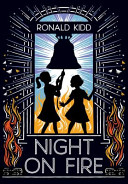Gr 4–7—Anniston, AL, 1961. The Greyhound buses are the shiniest and most exciting things that ever speed through Billie Sims's small town, and as Billie races them down the hill on her bicycle, she dreams of riding away to freedom, to find excitement. As it turns out, she doesn't even have to ride as far as the bus station to find all of those things and more than she bargained for. The Freedom Riders are coming to town, challenging the "traditions" and the segregationist status quo that Billie is just learning to see and to question, with some help from her neighbors and friends, including firebrand reporter Tom McCall and his photographer son, Grant—as well as her family's longtime maid, Lavender Jones, and Lavender's daughter, Jarmaine. Billie admires the Riders' purpose and strength, and goes to see them hoping to be changed and witness history. History on Mother's Day 1961, though, comes in the form of fire and blood, as people Billie thought she knew become an angry mob that burns the bus and beats the Riders in front of her local grocery store, while she watches along with her good ol' boy father and the Alabama Highway Patrol. The protagonist's direct and courageous response to her new awareness, along with a love of adventure and a new friend, carries her all the way to Montgomery, to the First Baptist Church to hear Dr. King speak. The story is filled with cameo appearances from Dr. King, Reverend Abernathy, Diane Nash, and other well-known names of the civil rights movement, but Billie and Jarmaine are more than bystanders. "After a lifetime of watching, [she] decided to ride." The story focuses on the events of the day, but also on Billie's growing understanding of her own internalized racism and racial blindness, which brings the story out of the "we've solved it" past and helps it resonate with children growing up in today's America. Kidd's writing is clear and direct, if not subtle, and he raises many hard questions with nuance and with hope. A brief author's note discusses the historical events in the story and mentions source material and further reading.
VERDICT Share this thought-provoking brush-with-history story with fans of Christopher Paul Curtis's The Watsons Go to Birmingham—1963 (Delacore, 1995) and Sharon Draper's Stella by Starlight (S. & S., 2015).




Be the first reader to comment.
Comment Policy:
Comment should not be empty !!!